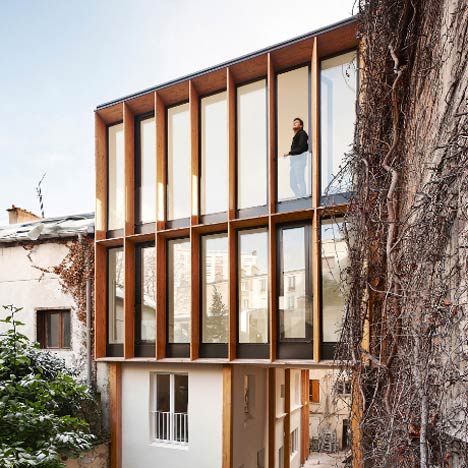
Heliotrope Raising by Bang Architectes
French photographer Julien Lanoo has sent us some images of this extension to a house in Paris by French studio Bang Architectes.
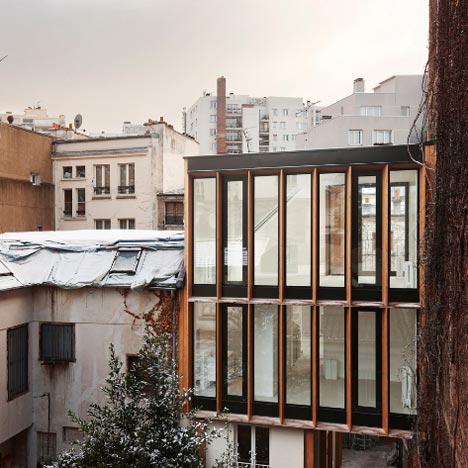
Called Heliotrope Raising, the project involved topping an existing house with this glazed wooden-framed structure.
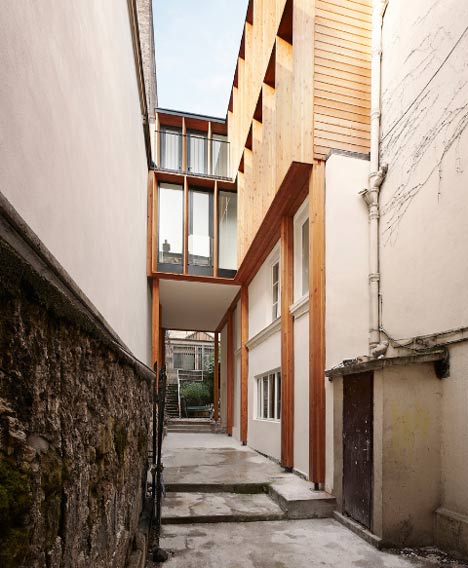
Situated on a narrow plot of land, the original house was too small in size and overlooked by neighbouring buildings, meaning a limited amount of light entered the space.
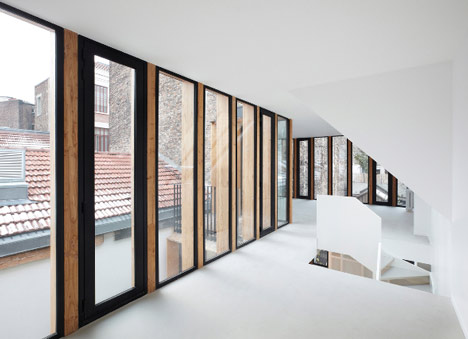
The architects have extended the house vertically, adding two extra floors and creating a new living space at the very top, which is bathed in natural light.
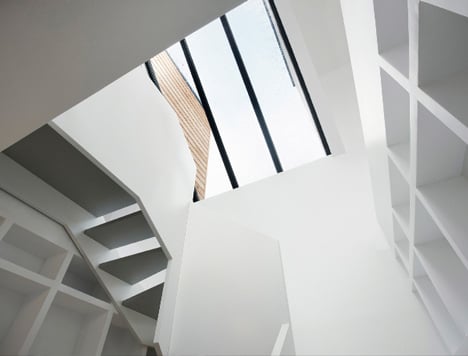
Photographs are copyright Julien Lanoo.
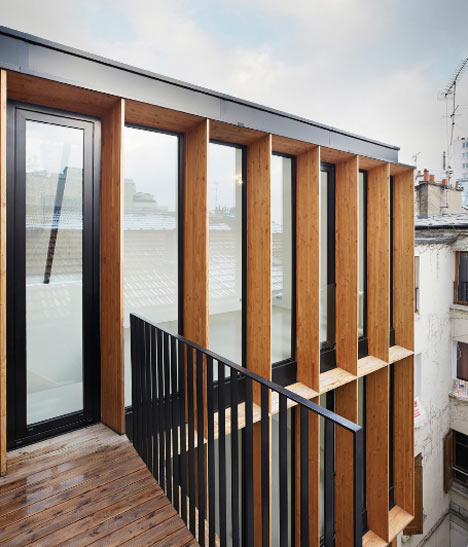
See all our stories on residential extensions in our Dezeen archive.
All our stories featuring Julien Lanoo's photographs »
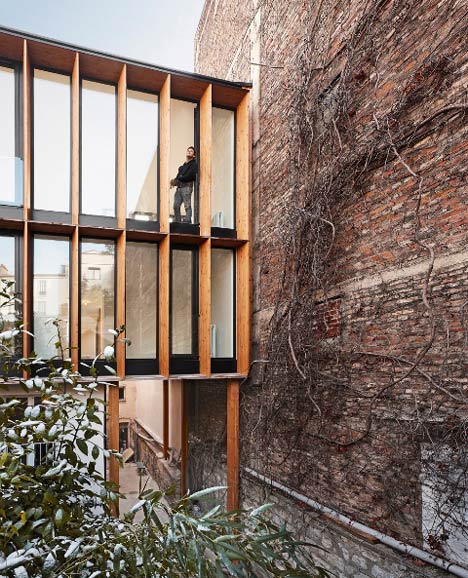
Here's some more information from the architects:
HELIOTROPE RAISING
Initially, there is a modest little house, totalizing an area of 60 m² on two levels, situated in a backyard plot, in a very narrow area of the 20th district of Paris. Enclosed and humid because of the presence of an underground aqueduct, the house is plunged into darkness as the buildings nearby and especially a 20m high wall cover any chance of light.
Beyond the obvious need to increase the family's living space, there is also a true a desire to gain light and visual clearance.
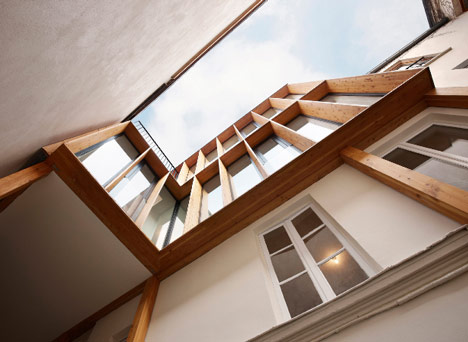
The search for light is what guides the design of the project until the genesis of an “heliotropist" architecture. It is therefore necessary to gain height over the old construction up to the maximum volume of capacity, limits of urban regulations, and budget. Naturally, the center of gravity of the new dwelling, that is to say the living rooms, finds its place on the top floor.
The access to the site through a 90cm wide corridor and the structural weakness of the existing building makes us opt for a lightweight wooden structure wich can easily be manipulated. On the wide length of the house, side yard, the existing walls are so fragile that, as a precaution, large "stilts" in glulam will span them.

On the newly created floors, on all open sides, the skeleton of the wood frame wall will be exhibited. Structural elements will be displayed every 80 cm, combined with a filling of a full height volume of glass for maximum natural light.
Structural glued laminated Douglas, extended and narrowed asymmetrically draws a regular vertical grid which acts as a sunshade and opposes a kind of three-dimensional filter to vis-à-vis. This principle applied consistently unifies the created volume and gives it a clear expression, despite its modest size, in a dominant and diverse site. Finally, this technique removes the problem of façade composition on such a small volume.
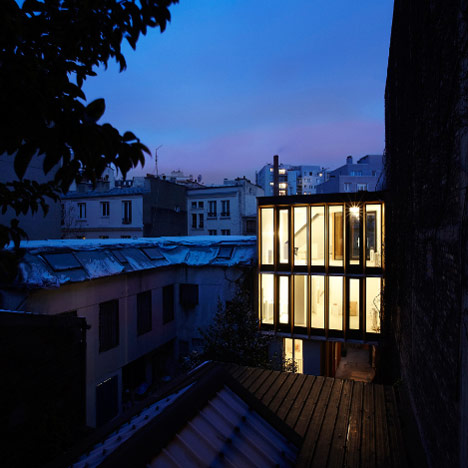
Internally, the house is organized around a central space occupied by the staircase beneath a canopy angle (regulation impact of a prospect of a neighboring building). The hopper, in decreasing width, lets the light descend from the canopy to the DRC. A small south-facing terrace on the 3rd floor benefits directly from the sun and the view over the colorful roofs of the neighborhood. In the new part of the house, partitioning is voluntarily minimized. The facades are left free to all partitions or doors; we flow along to enter the bathroom or walking closet.
Program: adding levels and renovating a house for a couple and two children
Location: rue de la Mare, Paris 20ème
Total net floor area: 170 m²
Creates net floor area: 98 m²
Total cost: 270 K € (all taxes included)
Client: Private
Project manager: Bang Architects (Nicolas and Nicolas Gaudard Hugoo)
Start of study: February 2009
Delivery: October 2010
Construction system:
- structural and facade: glued laminated douglas (untreated)
- floors and roof: pine wood panels (OSB)
- external wall: wooden frame wall + larch cladding
- insulation: 12 cm wood wool
- window frames: aluminum thermal break with double-glazing 6/16/6, argon, low emissivity
- covering: self-protected tar
Environmental approach:
- compact volume
- thermal insulation quality: wood wool on 12 cm
- no thermal bridges through "all wood"
- structural elements acting as shading in summer
- Low emissivity glass
- window frames with thermal bridges break
- natural light from all parts (except toilets) to reduce energy consumption
- healthy materials: wood, linoleum, wood wool, etc..
See also:
.
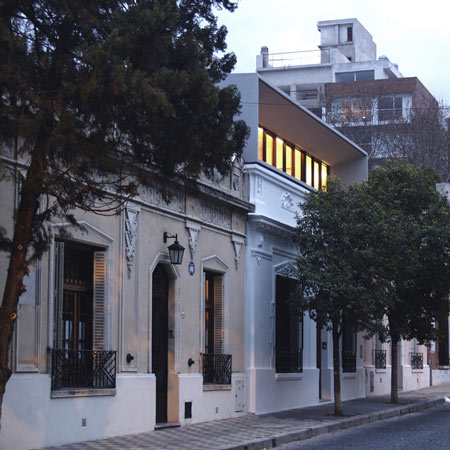 |
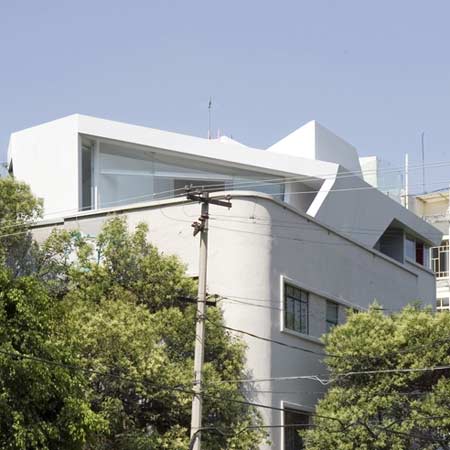 |
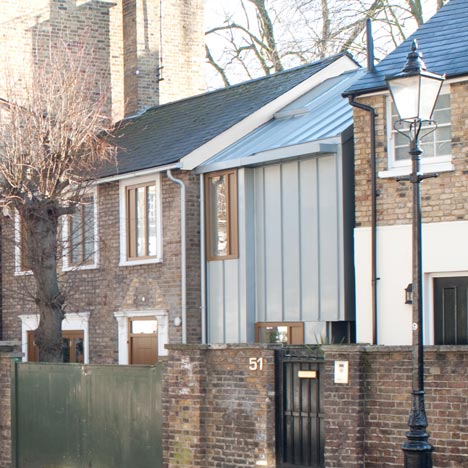 |
| Vol House by Estudio BaBO |
Origami by Architects Collective |
51A Gloucester Crescent by John Glew |